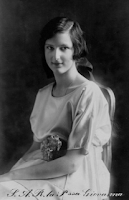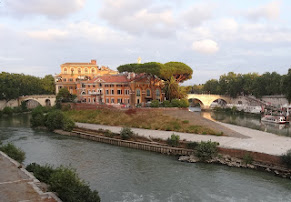Calisto Tanzi - disgraced businessman
Man at the centre of the Parmalat scandal
Calisto Tanzi, the business tycoon jailed for 18 years following the biggest corporate disaster in Italian history, was born on this day in 1938 in Collecchio, a town in Emilia-Romagna, about 13km (8 miles) from the city of Parma. Tanzi was founder and chief executive of Parmalat, the enormous global food conglomerate that collapsed in 2003 with a staggering €14 billion worth of debt. Subsequent criminal investigations found that Tanzi, who built the Parmalat empire from the grocery store his father had run in Collecchio, had been misappropriating funds and engaging in fraudulent practices for as much as a decade in order to maintain an appearance of success and prosperity when in fact the business was failing catastrophically. Of all those hurt by the collapse, the biggest victims were more than 135,000 small investors who had bought bonds in the company, some of them trusting Parmalat with their entire life savings. Between 2008 and 2010, Tanzi was found guilty by four different courts of fraud, of the fraudulent bankruptcy of Parmalat, the fraudulent bankruptcy of Parmatour, a travel industry subsidiary, and of false accounting at Parma, the football club he owned. Read more…
______________________________________
Giovanni Pico della Mirandola – philosopher
Writer of the 'Manifesto of the Renaissance' met an early death
Renaissance nobleman and philosopher Giovanni Pico della Mirandola died on this day in 1494 in Florence, sparking a murder mystery still not solved more than 500 years later and that led to the exhumation of his body in 2007. Pico became famous for writing the Oration on the Dignity of Man, which was later dubbed the 'Manifesto of the Renaissance'. At its heart, the Oration proposed that man is the only species of being to which God assigned no specific place in the chain of being and that man could ascend the chain through the exercise of his intellectual capacity, and for that reason it stresses the importance of the human quest for knowledge. Renowned for his memory as well as his intellect, he could recite Dante’s Divine Comedy line-by-line backwards and by the time he was 20 he has mastered six languages. But he made enemies and it his thought that his death at the age of just 31 was the result of poisoning because of concerns that he had become too close to hellfire preacher Girolamo Savonarola, an enemy of Florence's ruling Medici family. It was Savonarola himself who delivered the funeral oration when Pico was buried at the Convent of San Marco in Florence where he was the Prior. Read more…
_________________________________________
Premiere of Verdi’s first opera
Oberto, Conte di San Bonifacio performed at La Scala
Giuseppe Verdi’s first opera to be performed made its debut at Teatro alla Scala in Milan on this day in 1839. Oberto, Conte di San Bonifacio, which Verdi had written over a period of four years, is an opera in two acts. It is thought to have been based on an existing libretto by Antonio Piazza, reworked as a new libretto by Temistocle Solera, an Italian novelist. Piazza’s libretto had been given to Verdi by Pietro Massini, director of the Società Filarmonica, a choral group to whom he had been introduced by Vincenzo Lavigna, the maestro concertatore at La Scala, of whom Verdi was a private pupil. It was given the title of Rocester and Verdi was keen to see it produced in Parma, at the opera theatre nearest to his home town of Busseto, where he held the post of maestro di musica of the municipal orchestra. However, Parma said they had no interest in staging new works and instead an approach was made to Milan. Whether Rocester actually became the basis for Oberto is subject to some disagreement among academics. Verdi is said to have been invited to meet the La Scala impresario, Bartolomeo Merelli, who had been given good reports of Oberto’s musical quality and offered to put it on during the 1839 season. Read more…
_______________________________________
Andreotti jail sentence stuns Italy
Ex-prime minister found guilty of conspiracy to murder
Giulio Andreotti, who was Italy’s prime minister on seven occasions and an almost permanent presence in Italian governments from 1947 until 1992, was handed a 24-year prison sentence on this day in 2002 when a court in Perugia found him guilty of ordering the killing of a journalist. The verdict was greeted with shock and consternation across Italy given that Andreotti, by then 83 years old, had been acquitted of the charge in the same courtroom three years earlier. The appeal by prosecutors against that acquittal had not been expected to succeed and, in contrast to the original trial, the hearing attracted only modest media interest, with only a handful of reporters present when Andreotti’s fate was announced, at the end of a six-month process. This time the court ruled that Andreotti had, in fact, conspired with associates in the Mafia to murder journalist Carmine ‘Mino’ Pecorelli, the editor of Osservatore Politico, a weekly political magazine in Rome, who was shot dead on a street in the capital in 1979. The charge had been based on the evidence of Tommaso Buscetta, the Mafia pentito - or supergrass - who had been the key figure in the so-called Maxi Trial a decade earlier in Palermo. Read more…
________________________________________
Bronzino – master of Mannerism
Florentine became Medici court painter
The Mannerist painter Agnolo di Cosimo – better known as Il Bronzino or simply Bronzino – was born on this day in 1503, just outside Florence. Bronzino is now recognised as the outstanding artist of what has become known as the second wave of Mannerism in the mid-16th century. His style bears strong influences of Jacopo Pontormo, who was an important figure in the first wave and of whom Bronzino was a pupil as a young man in Florence. The Mannerist movement began in around 1520, probably in Florence but possibly in Rome. In the evolution of art it followed the High Renaissance period. Typical of Mannerist painters is their use of elongated forms and a style influenced by the attention to detail allied to restrained realism that was characteristic of the Renaissance masters Raphael, Michelangelo and Leonardo da Vinci. Bronzino became best known for his portraits, which were detailed and stylishly sophisticated, in which the subjects were superbly realistic but also tended to wear stoical, rather haughty expressions. He also paid particular attention to fabric and clothing, his works often notable for his recreation of textures. Read more…
_________________________________________
Umberto I assassination bid
First attempt to kill the king is foiled
An unsuccessful attempt was made on the life of King Umberto I of Italy on this day in 1878 in Naples. Umberto was making a tour of the kingdom accompanied by his wife, Queen Margherita, and the Prime Minister, Benedetto Cairoli. While saluting the crowds in Naples from his carriage, Umberto was attacked by a young man, Giovanni Passannante, who was employed as a cook at the time, but was later described as an anarchist. Passannante jumped on the carriage and attempted to stab the King. Umberto warded off the blow with his sabre but the Prime Minister, who came to his aid, was wounded in the thigh. This was the first of three attempts on the life of Umberto I, who despite being nicknamed il Buono (the good), lost popularity with his subjects as his reign progressed. He had won the respect of people because of the way he conducted himself during his military career and as a result of his marriage to Margherita of Savoy and the subsequent birth of their son, who was to become King Victor Emmanuel III. But Umberto became increasingly unpopular because of his imperialist policies and his harsh ways of dealing with civil unrest. Read more…

.jpg)

.jpg)


.jpg)






.jpg)


.jpg)


.jpg)





.jpg)


.jpg)


.jpg)
.jpg)
.jpg)

